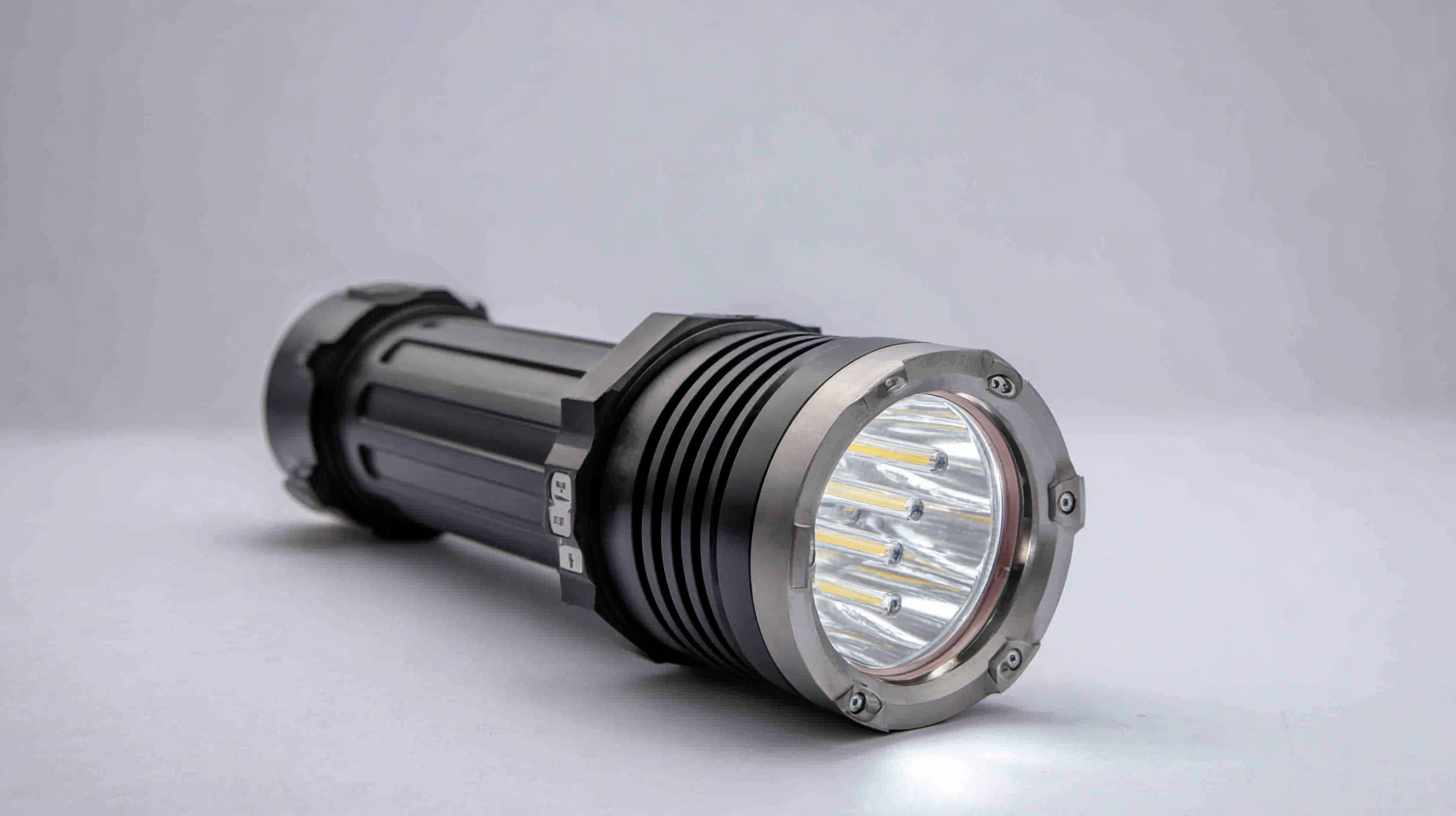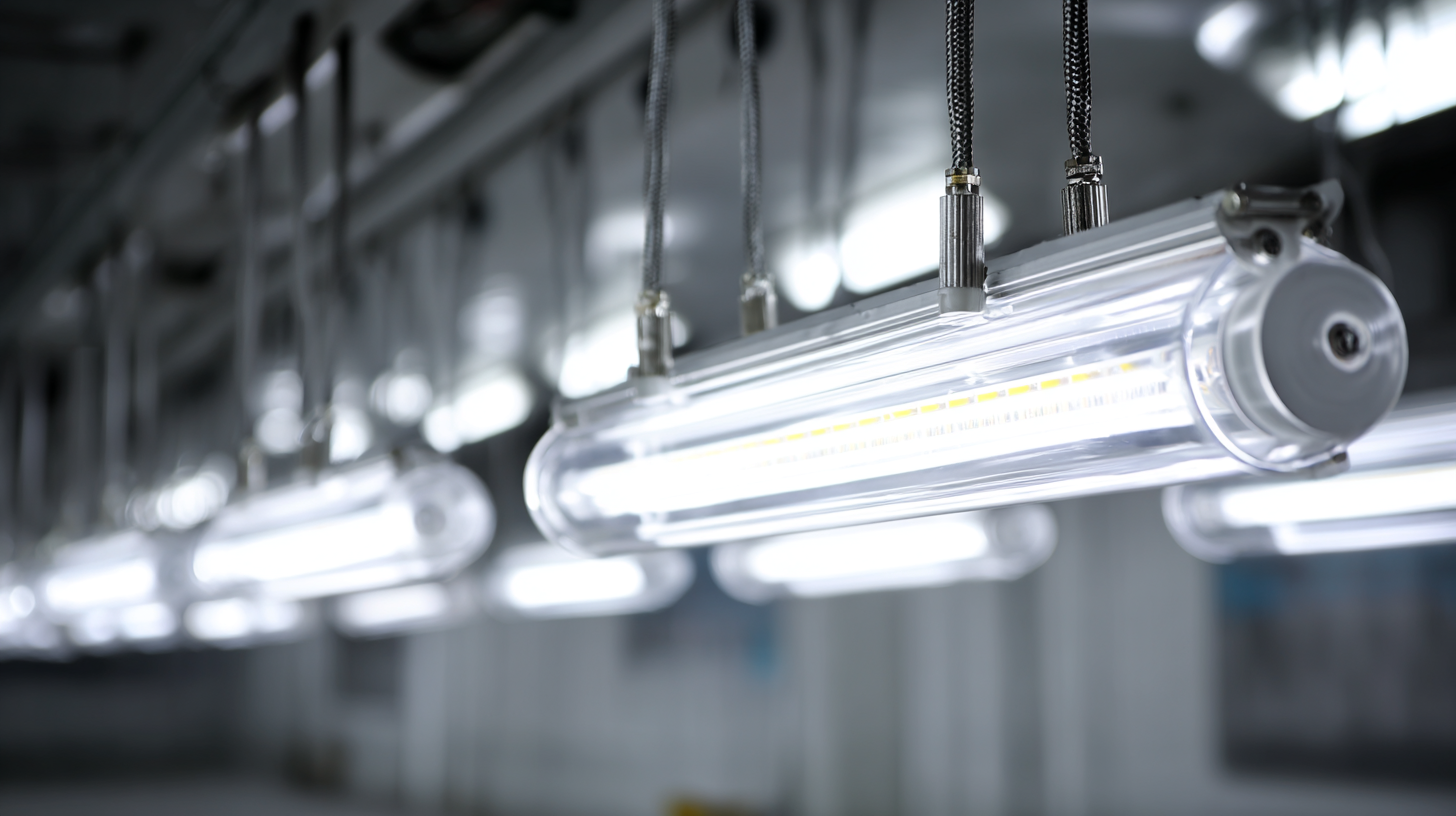
In the ever-evolving landscape of industrial safety, the demand for reliable and efficient explosionproof lights continues to grow. As we look toward 2025, understanding the future trends in the explosionproof light market becomes crucial for organizations aiming to enhance safety measures in hazardous environments. These specialized lighting solutions are designed to mitigate the risks associated with flammable gases and dust, ensuring both worker safety and regulatory compliance.

However, with a plethora of options available, choosing the best explosionproof light can be daunting. This blog will explore key trends influencing the market, including technological advancements and emerging designs, while providing a comprehensive comparison of various types of explosionproof lights. By equipping yourself with this knowledge, you can make informed decisions that not only comply with safety standards but also promote efficiency in operations.
The future of the explosionproof lights market is being shaped by several key trends that are expected to influence the industry by 2025. With a projected compound annual growth rate (CAGR) of approximately 7.5%, the market is poised for significant expansion, largely driven by the increasing demand for safety in hazardous environments such as oil and gas, mining, and chemical manufacturing sectors. According to a report by Research and Markets, the global explosionproof light industry is estimated to reach over $5 billion by 2025, reflecting an aggressive push towards improving workplace safety standards and regulatory compliance.
Technological advancements also play a vital role in shaping future developments in explosionproof lighting. The integration of LED technology is spearheading a transformation due to its energy efficiency, longevity, and reduced heat emission, making it an ideal choice for hazardous conditions. A study from MarketsandMarkets highlights that LED explosionproof light fixtures are expected to dominate the market, accounting for over 45% of the overall share by 2025. Furthermore, the focus on smart lighting solutions, which include IoT connectivity and real-time monitoring capabilities, is emerging as a significant trend, providing users with enhanced control and efficiency in managing their environments.
This chart illustrates the projected market demand percentage for various types of explosionproof lighting technologies by 2025. LED technology is expected to dominate the market, driven by advancements in energy efficiency and safety features.
The explosion-proof lighting market is rapidly expanding, driven by an increasing demand for safety solutions across hazardous environments. However, while growth prospects are strong—with market size projected to reach approximately USD 552 million by 2031—several common challenges persist. One significant issue is ensuring compliance with stringent safety standards and regulations, which can vary by industry and location. Manufacturers and users must stay updated on these regulations to avoid legal repercussions and ensure operational safety.
Another key challenge involves the technology used in explosion-proof lighting solutions. Many existing products may not fully leverage advancements in LED technology, which offer improvements in energy efficiency and lifespan. Furthermore, addressing compatibility issues with older infrastructure can complicate upgrades to new lighting solutions. To navigate these challenges, stakeholders must engage in thorough market research and choose products that not only meet safety standards but also incorporate the latest technological advancements to ensure long-term efficiency and reliability in hazardous environments.

When selecting explosion-proof lights for your business, it’s crucial to consider several key factors to ensure safety and efficiency in hazardous environments. First, evaluate the specific requirements of your location, such as the level of hazardous materials present and the type of activities conducted. This assessment will guide you in determining the appropriate classification of explosion-proof lights needed for your facility.
Another important aspect is adjustability. The trend toward field-adjustable lighting systems allows businesses greater flexibility in adapting their lighting needs to changing circumstances. This feature not only enhances operational efficiency but can also lead to significant cost savings over time. Ensure to look for options that offer easy installations and adjustments without sacrificing safety compliance.
Lastly, focus on the energy efficiency of the lights you choose. With the explosion-proof lighting market expected to grow substantially, many new options are available that leverage advanced LED technology. Selecting lights that are both durable and energy-efficient contributes to a safer environment, while also reducing long-term operational costs. Prioritizing these factors will help you make the best decision for your specific needs.
| Feature | Importance | Considerations | Future Trends |
|---|---|---|---|
| Lumens Output | High | Evaluate required brightness levels. | Increase in high-output options. |
| Durability | Critical | Material and construction quality. | Emphasis on rugged designs. |
| Energy Efficiency | High | Look for energy-saving features. | Growing focus on LED technologies. |
| Safety Ratings | Essential | Check ATEX, IECEx certifications. | Increasing regulatory standards. |
| Installation Flexibility | Important | Assess mounting options and ease of setup. | Trends towards modular designs. |
| Cost | Considerable | Balance between quality and budget. | Increased competition leading to better pricing. |
The explosionproof lights market is evolving rapidly, primarily driven by innovative technologies that enhance safety and efficiency in hazardous environments. Advances in LED technology have been at the forefront, offering significant improvements over traditional lighting solutions. LEDs are not only more energy-efficient, reducing power consumption and operational costs, but they also deliver brighter and more focused light, which is crucial in potentially explosive atmospheres.

Another significant trend is the integration of smart lighting systems. These systems utilize IoT (Internet of Things) technology to monitor environmental conditions and adjust lighting accordingly. For instance, explosionproof lights equipped with smart sensors can automatically dim or brighten based on ambient light levels or the presence of personnel. This functionality not only enhances safety by ensuring optimal visibility but also contributes to energy savings and extended equipment lifespan. As these technologies continue to advance, they will play a critical role in shaping the future of explosionproof lighting solutions, ensuring that businesses can operate safely and efficiently in challenging environments.
Explosionproof lights are critical in various industries where flammable gases, vapors, or combustible dust are present. Industries such as oil and gas, chemicals, pharmaceuticals, and mining require robust lighting solutions to ensure safety and compliance with stringent regulations. In these environments, traditional lighting poses significant risks, including sparks that could ignite hazardous materials. Therefore, explosionproof lighting systems are designed with sturdy housings, sealed components, and specific materials that can withstand extreme conditions, making them essential for operational safety.
Furthermore, in manufacturing facilities, explosionproof lights help maintain visibility during routine operations and emergency situations. They ensure that workers can navigate safely through potentially dangerous areas, enabling them to perform tasks without the added risk of ignition. When selecting the best explosionproof lighting, it is crucial to consider factors such as the classification of the hazardous area, the type of materials present, and the specific requirements of the industry. Understanding these factors not only helps in making informed decisions but also ensures compliance with safety regulations, ultimately fostering a safer working environment.
